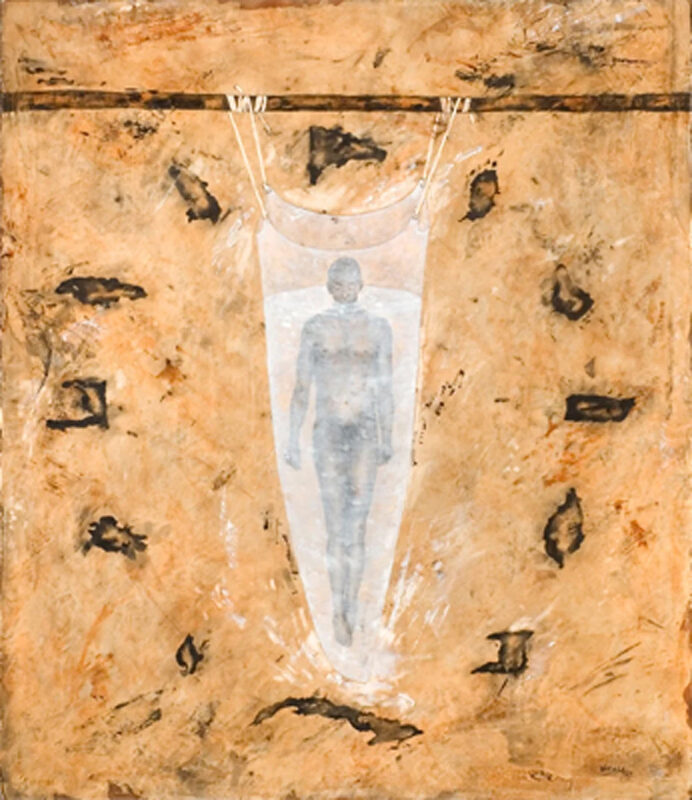Fernando Varela's "Recent Works" are a demonstration of combined mastery and freshness. A deliberately minimalist title, without a guiding key, encouraging open reading.
We are grateful to Fernando Varela for presenting at District & Co, a gallery specializing in contemporary art, a collection of drawings, paintings, and sculptures, evidencing both volubility and coherence, concept and craft, and diversity, while knowing how to preserve the elements—figurative, lyrical, and/or neo-abstract—that make it unmistakable.
The work generates a strategy of progressive, ascending contemplation: if a painting appears hermetic at first glance, an unknown fascination prevents us from moving away, and as we integrate into the atmosphere and its pictorial—or graphic—components, we decipher, interpret, participate… We find a conceptual approach and purpose, apart from formal seduction. This exhibition, simply called “Recent Works” but which we consider a “brief anthology” of Varela's expression in recent years, has been very well selected. Let us not forget Fernando's experience as a “curated curator,” which he knows how to apply to his own work…
The intelligent and sensitive viewer—a necessary, if not sufficient, condition—appropriates this combination of intensity, intimacy, and mythologizing, never innocent and consciously seductive, which, at the same time, elevates the spirit. For, today as yesterday, Fernando Varela ignores the gratuitous and superficial. For years committed to the sublimation of being, then "geopoliticized" by the fate of the insular Caribbean, he manages to produce an iconography of eternal typology, yet situated in the present, concerned with life, nature, the state of the world and its prospects...in danger of extinction.
The exhibition. The emblematic work here is an installation of white crocodiles, "cloned" in sea salt, on which they also rest. An endangered species, more weak than devouring, it has survived for millions of years, but how many more will it survive? The three-dimensionality, the monochrome, and the naturalism transform the three beasts into foretold victims, an allegory of lives without a future, not to mention the fact that it is a beautiful reincarnation.
Fernando Varela remains multidisciplinary, his sculptural approach differing, even in style, from drawings and paintings. Furthermore, as a contemporary artist, he has long rejected the idea of "progression" in his work. He explores different modes of creation, working in series. The exhibition at District clearly reflects this process: there is a mutation of languages with a broad self-definition, although always with a strong aesthetic content.
It's important to emphasize that, even within the same technique and subject matter, he doesn't repeat himself, but rather varies and enriches. This capacity for self-renewal is particularly evident in his Lettrist paintings. Now Fernando Varela "takes the floor," and in two languages that exchange, if not interact in semantics and message. When he writes "Black is white" and vice versa, he alludes to the restlessness of a contradictory world, hammering it from his consciousness into ours, in different sizes, colors, and arrangements. The diversity of tools intensifies the ideological discourse.
It's a single voice—a kind of obsession—that agonizes over the problems of humanity, its environment, and its individual and collective destiny. The paintings and drawings, where the figure and the body take center stage, express this in an almost piercing way; the figure, necessarily anonymous, remains enclosed in an unusual sieve, but can float, ascend, and escape… Furthermore, Fernando Varela, who often employs mediated ranges, with low and insinuating luminosity, introduces a bright, verdant, purifying chromatic variation. A hopeful space for creatures and nature in their different realms, which share the pictorial territory.
"Recent Works," a deliberately minimalist title, lacking a guiding principle and thus encouraging an open, personal, and inquisitive reading, stands out as an excellent exhibition, where each work stands alone and has its place. Fernando Varela is one of the leading artists on the Dominican visual scene.

